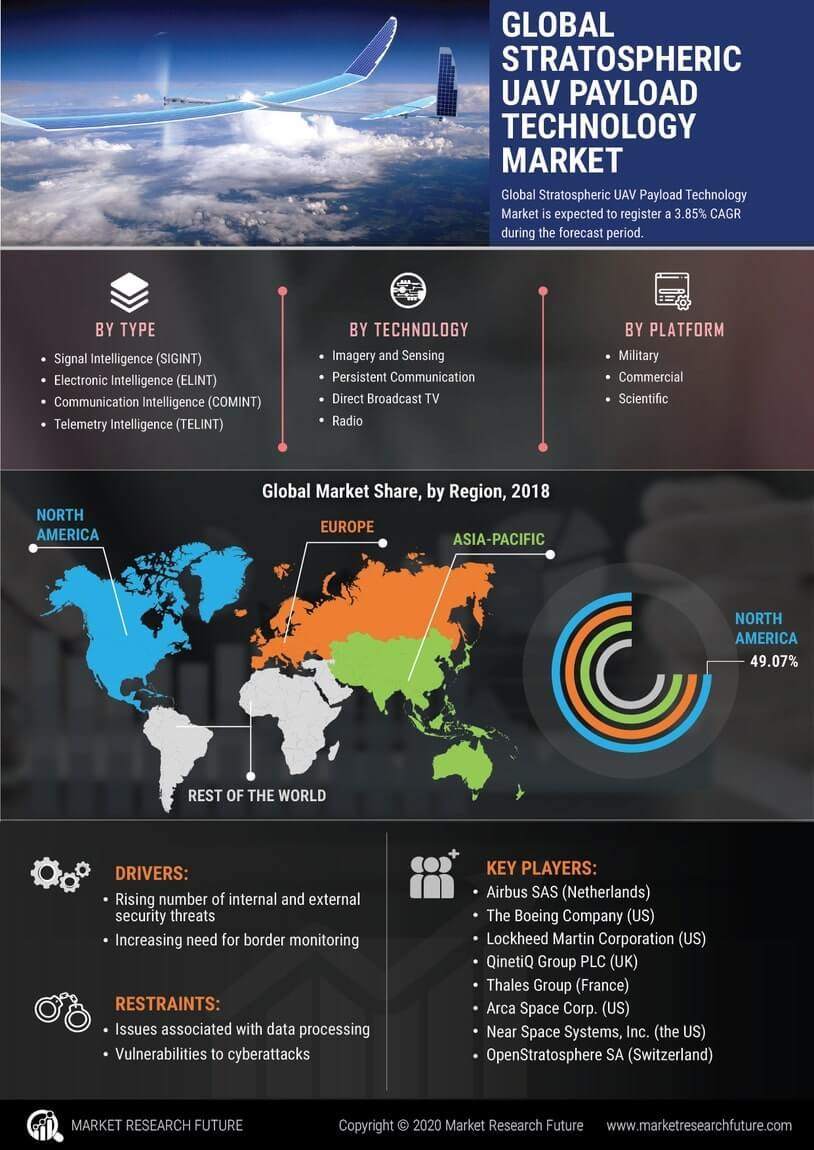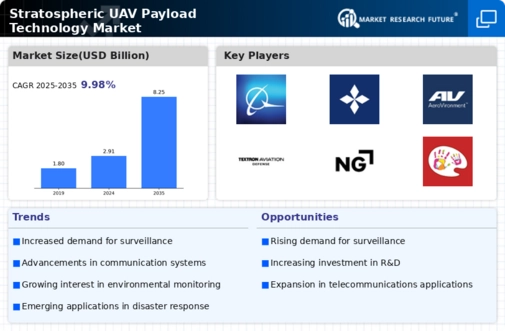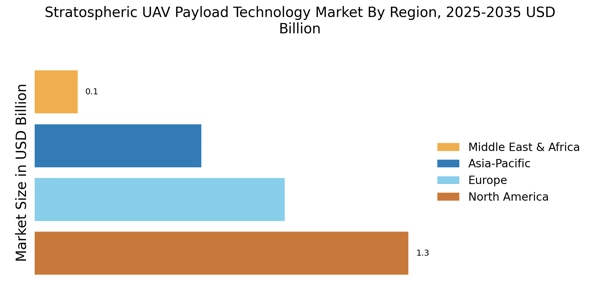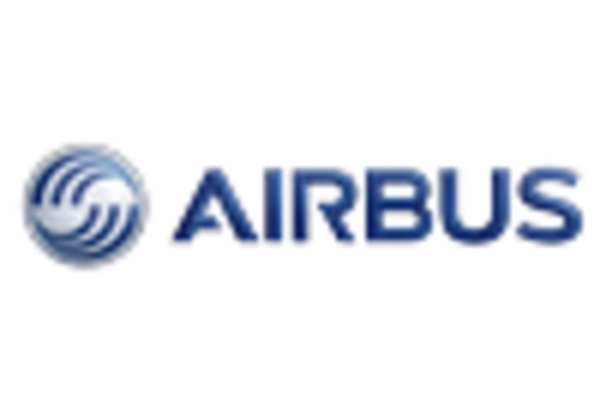Military Modernization Initiatives
The Stratospheric UAV Payload Technology Market is significantly impacted by military modernization initiatives across various nations. As defense budgets increase, there is a strong emphasis on enhancing aerial capabilities, particularly in surveillance and reconnaissance missions. Stratospheric UAVs, equipped with advanced payloads, are becoming integral to military strategies, providing critical intelligence and operational support. The market is expected to benefit from substantial investments in UAV technology, with estimates suggesting that military spending on UAVs could exceed $10 billion annually by 2030. This trend reflects a broader shift towards unmanned systems in defense, as militaries seek to leverage the advantages of high-altitude operations for strategic superiority.
Advancements in Communication Technologies
The Stratospheric UAV Payload Technology Market is poised for growth due to advancements in communication technologies. Enhanced data transmission capabilities, including satellite communications and 5G networks, are enabling stratospheric UAVs to operate more effectively. These technologies facilitate real-time data sharing and remote control, which are critical for applications such as disaster response and military operations. The integration of high-bandwidth communication systems allows UAVs to transmit high-resolution imagery and sensor data from stratospheric altitudes, thereby improving operational efficiency. As the demand for reliable and fast communication continues to rise, the market for UAV payloads that leverage these technologies is expected to expand, potentially reaching a valuation of several billion dollars within the next few years.
Emerging Applications in Commercial Sectors
The Stratospheric UAV Payload Technology Market is witnessing emerging applications in various commercial sectors, including agriculture, telecommunications, and logistics. Stratospheric UAVs are being utilized for precision agriculture, enabling farmers to monitor crop health and optimize resource use from high altitudes. Additionally, telecommunications companies are exploring the use of UAVs to provide connectivity in remote areas, enhancing service delivery. The logistics sector is also beginning to adopt UAV technology for aerial delivery services, which could revolutionize supply chain operations. As these applications gain traction, the market for UAV payloads is likely to expand, with projections indicating a potential growth rate of 12% annually as industries recognize the benefits of stratospheric UAV capabilities.
Growing Interest in Environmental Monitoring
The Stratospheric UAV Payload Technology Market is increasingly influenced by the growing interest in environmental monitoring. Stratospheric UAVs equipped with specialized payloads are being utilized for climate research, pollution tracking, and wildlife conservation. The ability to gather data from high altitudes allows for comprehensive assessments of atmospheric conditions and environmental changes. This trend is supported by various governmental and non-governmental organizations that are investing in UAV technology to address environmental challenges. The market is likely to see a surge in demand for payloads that can measure greenhouse gases and other pollutants, with projections indicating a potential market size increase of over 20% in the next five years as environmental concerns become more pressing.
Rising Demand for Surveillance and Reconnaissance
The Stratospheric UAV Payload Technology Market is experiencing a notable increase in demand for surveillance and reconnaissance applications. This trend is driven by the need for enhanced situational awareness in various sectors, including defense, environmental monitoring, and disaster management. The market for UAVs equipped with advanced payloads is projected to grow significantly, with estimates suggesting a compound annual growth rate of over 15% in the coming years. As nations prioritize national security and environmental protection, the integration of sophisticated sensors and imaging technologies into stratospheric UAVs becomes essential. This demand is further fueled by the increasing complexity of global threats, necessitating advanced aerial surveillance capabilities that can operate at high altitudes, thereby providing a strategic advantage in intelligence gathering.


















Leave a Comment